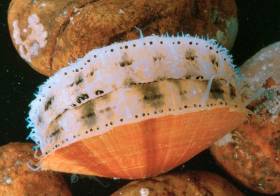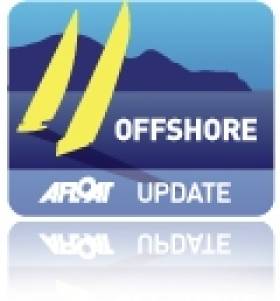Displaying items by tag: Normandy
Downing Street Moves To Defuse Tensions Over English Channel ‘Scallop Wars’
#Fishing - Authorities in France and the UK have stepped into the ‘scallop wars’ that broke out between rival fishing fleets in the English Channel near Le Havre last week.
As the Guardian reports, some 35 French boats chased away five British vessels off the Normandy coast in a standoff over restrictions on the region’s scallop fishery.
Between March and October, French boats are barred from fishing for scallops in the 40 miles of international waters off Normandy called the Baie de Seine.
Smaller British boats dredging for scallops in the same waters are under no such prohibition, which has raised the ire of their French counterparts who claim their stocks are being poached.
The French navy has already pledged to intervene in the event of any further clashes — prompting Downing Street to push for further talks between the two sides.
The Guardian has much more on the story HERE.
100 yachts are expected in Le Havre from 3 to 9 June for the eighth running of Normandy Sailing Week. Around ten series will be racing during the week-long competition in Baie de Seine, North-East France. A number of events will be run within the context of Normandy Sailing Week, including the French J80 Cup, the European J111 Championship, the first leg of the French Elite Championship for crewed offshore M34 racing and the UNCL Trophée Manche and Normandie for the IRC category.
A fine vintage is scheduled to race in Le Havre for the eighth act of Normandy Sailing Week! Over 800 racers will be competing on a number of close-contact, coastal courses launched by race committees responsible for each of the three race zones.
Significantly, the French J80 Cup is making its comeback in Le Havre this year. As such, over 25 J80s will be on the race zone with a sizeable local delegation. Le Havre's Société des Régates (Racing Society) has helped to boost this move with the purchase of five boats from the "J Composites" yard.
This Norman sailing event will begin with action from the M34s, the craft used in the Tour de France à la Voile. Around a dozen 34-feet Archambaults will enter the fray from the morning of Tuesday 4 June, when they take the start of a 230-mile race. All the Class' powerhouses will be there. Daniel Souben "Courrier Dunkerque 3", Nicolas Troussel "Crédit Mutuel – Bretagne", Cédric Pouligny "Team Oman", Corentin Douguet "Nantes / Saint-Nazaire" will be doing battle with some of the series' 'newcomers', including "Groupama 34" skippered by Franck Cammas, the recent winner of the Grand Prix Guyader and the Volvo Ocean Race, as well as Thomas Coville aboard "Sodebo". Suffice to say then that this "Volvo Drive E Race" will be hotly contested, providing a perfect foretaste of the Tour de France, which sets sail from Dunkirk at the end of June. Following on from this, the M34s will complete a series of round-the-cans courses off Le Havre from Thursday.
They will be joined by the J111 racer-cruiser fleet, which will see no less than 14 boats competing for the European J111 Champion title. This prize will be awarded on Sunday as Normandy Sailing Week draws to a close.
On the second race zone, the IRCs will take centre stage from 7 June, with four separate rankings deciding between the IRC 1, IRC 2, IRC 3 and IRC 4 categories. The organisers are expecting large numbers with the confirmation that Franck-Yves Escoffier, of offshore fame, will be racing aboard an Archambault 35. The current IRC 2 title holder, "Dunkerque Plaisance", skippered by the formidable Philippe Bourgeois, will also be keen to score well. Other serious contenders include the JPK 10.10 "Foggy Dew" helmed by local sailor Noel Racine and the X41 "Orange Mecanix" skippered by Maxime de Mareuil.
Finally, on the third and final race zone, the sportsboats (which include the Seascape 18s), will put on a show amidst a frenzy of bowsprits and zippy hulls, fleshed out by the presence of some all new J70s. The stakes will be especially high for the First 7.5s, who will also be competing here in a challenge specific to the Ligue de Voile de Haute-Normandie (Upper Normandy Sailing League).
Celtic Link Ferries First Ferry Goes to the Breakers
Launched as the Stena Tranporter, the career of the 16,000 tonnes has spanned over three decades in which the 151m vessel changed through several owners and subsequent vessel renamings.
It was when she served under the name Baltic Ferry, that her most notable career took place in 1982 during her wartime deployment as part of the
Falklands Islands Task Force. The 151m vessel was requisitioned by the British Ministry of Defence which saw the ship engaged in military operations when RAF Harrier Jump-Jet aircraft transferred store supplies from the deck of the ship as part of the war-effort in the South Atlantic Ocean.
In 2001 the vessel undertook ferry operations to Ireland as the European Diplomat on the Dublin-Liverpool route for the P&O (Irish Sea) route network. The following year she was transferred on the direct route to France until P&O pulled the plug on the continental service in December 2004, leaving Irish Ferries as the sole operator.
It was not until February 2005 that the route resumed service but this time under new owners Celtic Link Ferries. The O'Flaherty brothers, owners of a large fishing fleet in Kilmore Quay purchased the vessel and renamed her Diplomat. See PHOTO.
For the next four years she built up a steady customer loyalty between freight-hauliers drivers and car-only accompanying passengers who were accommodated in the ship which had a limited passenger certificate for 114 passengers. In addition she had a license to transport livestock.
Currently Celtic Link Ferries operate the ferry Norman Voyager but the 800-passenger / 200-car ro-pax vessel will only remain on the route until an October debut of a larger sistership the Cartour Beta.
The vessel is running this season between Italy and Sicily and with an added deck the 27,552 tonnes vessel has an increased capacity for passengers, cars and enhanced range of facilities. Recently the company had run a competition to name the new vessel which is to begin a five-year charter on the service between Wexford and Normandy.
- Wexford
- irish sea
- Diplomat
- Celtic Link Ferries
- Kilmore Quay
- Stena Rederi
- Marine Express
- RosslareCherbourg
- Norman Voyager
- Ports and Shipping News
- Normandy
- RoPax
- DublinLiverpool
- P&O (Irish Sea)
- Ferry news
- Cartour Beta
- Irish Sea Ferries
- Stena Transporter
- Baltic Ferry
- European Diplomat
- O'Flaherty Brothers
- Falklands Islands Task Force
- Hyundai Heavy Industries
- Freighthauliers
- Livestock
- RAF
- Harrier JumpJets
La Solitaire du Figaro's Dun Laoghaire Stop-Over
Details for next year's course of the La Solitaire du Figaro race were revealed at the Paris Boat Show yesterday. The race will comprise four French towns and Dun Laoghaire will be the only foreign port of call when the boats are expected to arrive on 10 August.
In spite of Dublin airport weather delays a National YC contingent headed by Commodore Peter Ryan made it to Paris in time for the announcement.
Following several days for rest, the fleet shall once again set sail on 7 August for the second leg, of 470 nautical miles, that will take the Figaro Bénéteau 2 towards Dún Laoghaire. After leaving the Bay of Seine, a 40-mile or so run, the first obstacle will be the passage of the Barfleur point. The course remains inshore, as the single-handed sailors will sail along the Cotentin to the cape of the Hague, before heading towards the Channel Islands.
It will be compulsory to leave the islands of Aurigny, Herm and Guernsey to starboard. The skippers will then take on a long crossing of the English Channel, 120 nautical miles to Land's End. The last third of the course is a sail up almost full north over 190 nautical miles to reach Dún Laoghaire.
The Dublin Bay harbour is set to be a discovery for the visiting sailors and where the National Yacht Club are to be the host venue. After a few days rest and recuperation, the fleet then will set sail on 14 August to The Vendée and Les Sables d'Olonne. This third leg is long at 475 nautical miles with boats expected on 17 August.
Four days later and the final leg departs on 21 August with the boats setting a course for Dieppe, to arrive on 24 August. On the following day the Normandy port will also be hosting a closing regatta. For more information www.lasolitaire.com
Preparing for La Solitaire du Figaro here
Latest news for La Solitaire du Figaro here






























































